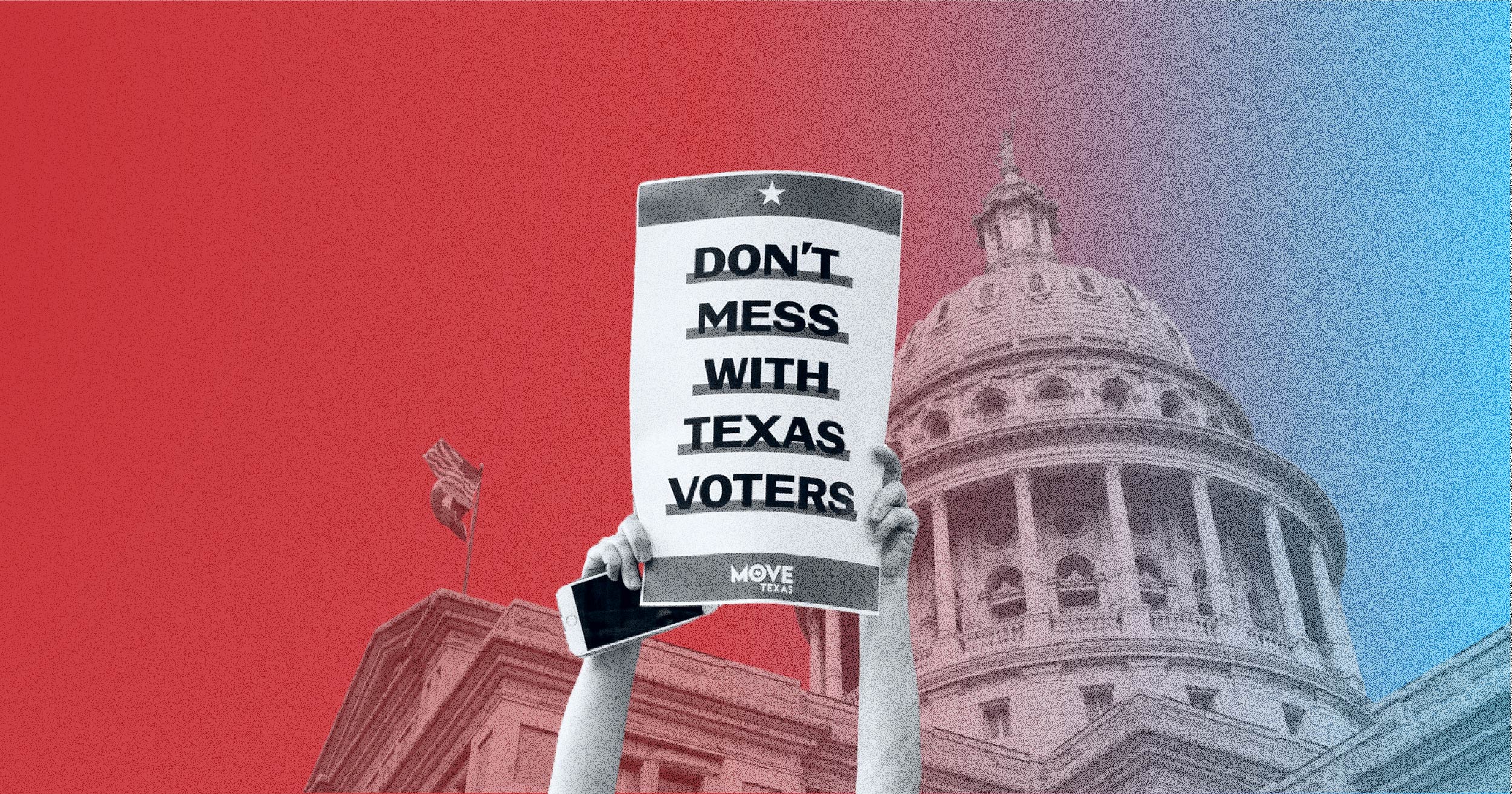“I wish I had more than three minutes,” Ashley Cheng told lawmakers in Austin while describing how the new GOP-drawn congressional districts would cut, splice, and carve out Asian American communities across the state.
Neighborhoods like Avery Ranch in Austin or cities like Sugar Land near Houston would be torn apart under the new maps, the voting power of their Asian American residents diluted, Cheng, an organizer with the Texas AAPI Redistricting Coalition testified to the Republican-controlled Texas House Redistricting Committee.
Issues important to those communities, such as rising hate crimes or language access, would have to be petitioned across multiple districts and lawmakers, effectively depressing their voices in Texas despite major growth in their communities. A similar story could be found across every minority group in the state despite the fact that they accounted for 95% of population growth in the state in the past decade.
To secure their hold on the state, Republicans created 23 congressional districts with white majorities, zero Black majority districts, and reduced the number of districts with a Hispanic majority from eight to seven.
“So many of you are sitting here and telling me these were drawn race-blind,” Cheng told lawmakers. “How could you say that, that our communities are still invisible to you after all of this?”
Moved by the testimony, long-time Dallas Democrat Rep. Rafael Anchía responded with words that might sting for any true believers of the American experiment that remain in Texas.
“There are some people who say we can out-organize maps like this and it’s obvious to me they’ve never done organizing, people who say stupid things like that,” Anchía said, making a less-than-subtle reference to White House officials who reportedly said Democrats in red states could simply “out-organize voter suppression.”
“That’s the moment I really broke down crying during that hearing,” Cheng recalled, laughing.
Organizing was physically and emotionally exhaustive, she said, and so many barriers already existed in Texas, the hardest state in the nation to vote in.
“It just felt like a gut punch when he said that because it runs so true in a very deep way,” Cheng said.
After her emotional testimony, Cheng said she was asked to do an interview with Univision where she was mindful not to discourage voters. Texas was already a non-voting state and the new gerrymandered maps threatened to compound voter apathy.
“There’s part of me that really toggles back and forth between being like such a cynical realist — I’m like four different Texans — and then wanting to be this total hopeful optimist when it comes to politics,” Cheng said. “Like wanting to believe in change, that anything is possible, and people deserve rights and we can gain them, and it all just comes out of the power of our votes! And this whole American Dream! But the longer I’ve been engaged in these systems — and I think this has been the pinnacle of that journey — the more I just feel like, ugh, there’s so much stacked against us. But we don’t have any other choice but to stay engaged.”
Cheng is hopeful federal voting rights legislation, like the Freedom to Vote Act, can come to the rescue. If passed, the legislation would ban partisan gerrymandering throughout the nation and transform Texas’ political maps.
In an interview with the Signal, Anchía said he felt deeply for organizers like Cheng who had busted their asses and now had their work frustrated and effectively neutered by a rushed redistricting process.
“You could tell she had put blood, sweat, and tears into organizing,” Anchía said. “And she started crying and then it made me tear up because I know, and she knows … this really is the great voter fraud.”
Elected in 2004 after the infamous mid-decade redistricting session and now wrapping up his second Republican redistricting, Anchía said it felt like déjà vu. When he first arrived at the legislature, Republicans had cut the statehouse districts too thin and by 2008, Democrats were just two seats from taking back control of the Texas House. A brutal midterm election dashed those hopes for Democrats in 2010 and Republicans once again had the opportunity to create new maps that saw communities of color receive zero additional congressional districts.
“The goal of Republicans was to stay in power long enough to be able to do it again during this redistricting cycle, regardless of the growth in minority communities,” Anchía said.
“Last decade, 85% of the growth was people of color, and courts found intentional discrimination — ten findings of intentional discrimination in three federal courts — but they still got away with it,” Anchía said. “They were able to hold on enough to do it again.”
He predicted if federal courts intervened again, it would provide some relief, but it would at best resemble the small changes brought on by courts in the previous decade.
Michael Li, a former Texan and senior counsel for the Brennan Center’s Democracy Program which has produced regular reports studying the impact of extreme gerrymandering, said the reality of the maps was that they were created to produce unfair results, and by and large, they stuck.
Could they be out-organized?
“I guess the Texas saying is bless your heart,” Li said. Gerrymandering, once a dark art, had now become a dark science, he said.
There were some cases where ruling parties got too smart for their own good, like gerrymandering too aggressively in Dallas County where Republicans lost almost every statehouse race in the past decade. But when done right, the maps were difficult to overcome.
“There were a bunch of competitive congressional districts in Texas in 2020 and Democrats won exactly zero of those,” Li said. “That really is a testament that these maps are designed not to flip.”
Still, there are some clear signs Republicans are feeling the pressure of the changing state and Democratic offensive.
“These maps tell me that Republicans are scared of the suburbs right now,” Li said.
Once GOP heartland credited with winning them power in the state, the diversifying and Trump-wary suburbs were now “kryptonite” to Republicans, Li said, describing how under the new maps, rural Republican voters were being used to neutralize Democratic growth in the suburbs.
That’s a shocking fact considering the 2003 redistricting cycle saw Republicans do the opposite. The new ruling party neutralized rural areas that still voted Democratic by combining them with their reliably red suburbs.
“They’re doing things to the suburbs that they used to do in Austin,” Li said. “You would divide up Austin in the past in order to bleed Democratic votes, but now they’re dividing up the suburbs.”
One of the best examples was Denton County north of Dallas. Under the new maps, a portion of Denton County voters now shared representation with voters in the Panhandle of Texas’s 13th congressional district. Likewise, the once reliably red 22nd congressional district was carved out and its Democratic voters moved deeper into Houston.
“You used to have a bunch of urban-suburban districts, that would be how you gerrymandered, but now you have urban-suburban-rural districts and suburban-rural districts,” Li said. “It’s remarkable.”
Terry Bermea, the executive director of the Democratic organizing PAC Battleground Texas, said the new maps were an undeniable setback.
“I will say that when the lines were drawn 10 years ago, it definitely seemed like we weren’t able to make any progress in electing Democrats again, but we did,” Bermea said.
Additionally, the new district lines had no impact on statewide races where Democrats had made steady gains in recent election cycles.
“Our organizational focus is to engage communities that haven’t traditionally been involved in the voting process,” Bermea said. “Not just to register them, but to create a voter and engage with them, to find out what they’re passionate about and have those conversations.”
“For us, it doesn’t necessarily change the mission of our organization and the values that we hold,” Bermea said of the new maps. “But it does maybe impact the timeline.”
Michelle Tremillo, the co-executive director of the issue advocacy organizing group Texas Organizing Project, said there needed to be federal action while groups like TOP continued their work.
“We are on the cusp of out-organizing the current maps, and now they’re changing the lines on us again in order to further disenfranchise us,” Tremillo said.
“Organizing does work,” Tremillo said. “The progress that we have made in the last few election cycles is proof of that.”
“They can’t stop us from increasing voter participation in communities of color,” Tremillo said. “That is going to add up to statewide impact.”
Photo: Robert Daemmrich Photography Inc/Corbis via Getty Images
Fernando covers Texas politics and government at the Texas Signal. Before joining the Signal, Fernando spent two years at the Houston Chronicle and previously interned at Houston’s NPR station News 88.7. He is a graduate of the University of Houston, Jack J. Valenti School of Communication, and enjoys reading, highlighting things, and arguing on social media. You can follow him on Twitter at @fernramirez93 or email at fernando@texassignalarchive.com





